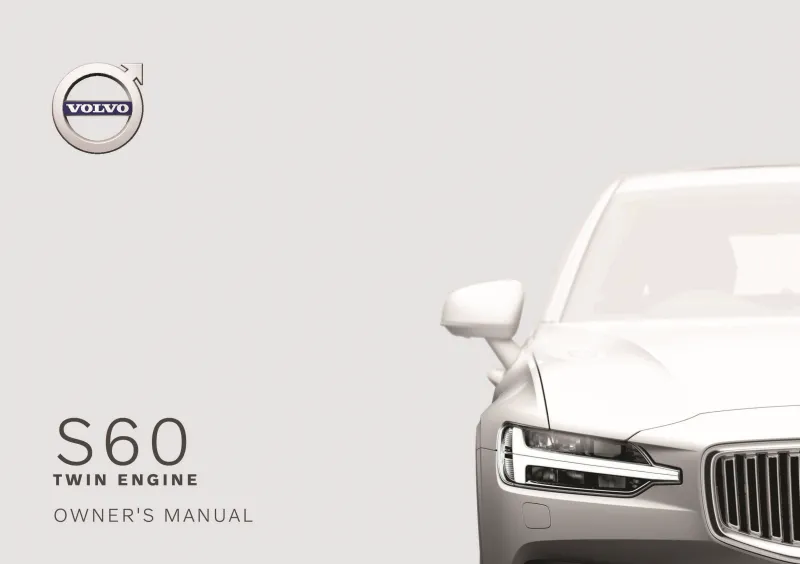2020 Volvo S60 Twin Engine Owner's Manual

Table of Contents
2020 Volvo S60 Twin Engine Overview
Introduction
The 2020 Volvo S60 Twin Engine exemplifies the fusion of luxury, performance, and environmentally conscious driving. This premium sedan is designed for the modern driver who seeks an engaging and eco-friendly experience without sacrificing comfort and style. With its Scandinavian aesthetic, innovative technology, and versatile powertrains, the S60 Twin Engine is a remarkable addition to the Volvo lineup.
Powertrains
The 2020 S60 Twin Engine features a clever plug-in hybrid powertrain that seamlessly combines a turbocharged petrol engine with an electric motor. This dynamic duo produces a combined output of 400 horsepower, delivering exhilarating acceleration and efficient performance. With an all-electric range of around 22 miles, drivers can enjoy local commutes on pure electric power while having the reassurance of a gasoline engine for longer journeys. The intelligent all-wheel-drive system further enhances traction and control in varying driving conditions.
Trims
The S60 Twin Engine comes in various trims, including the Inscription and R-Design variants. The Inscription trim is tailored for those seeking luxury, featuring premium leather upholstery, wood inlays, and advanced safety technologies. Conversely, the R-Design edition caters to the sporty driver, boasting a more aggressive exterior, sport seats, and unique styling cues that enhance its dynamic presence on the road.
Features
This exemplary sedan is laden with cutting-edge features aimed at elevating the driving experience. Standard equipment includes a large touchscreen infotainment system with smartphone integration, advanced driver-assistance technologies, and premium audio systems. Volvo's commitment to safety is evident with the inclusion of comprehensive safety packages that encompass adaptive cruise control, lane-keeping assist, and collision mitigation systems.
Owners Manual
The 2020 Volvo S60 Twin Engine's owner's manual serves as a vital resource, guiding owners through its extensive features, maintenance schedules, and troubleshooting guidelines. This detailed exploration not only empowers drivers with the knowledge needed to maximize the vehicle's capabilities but also embodies Volvo's commitment to customer satisfaction and support.
User manual download
The Volvo S60 Twin Engine owner manual for the 2020 model year is to be found in PDF downloadable format on this page. The owner manual for the model year 2020 is free and in English, but the repair manuals are usually not easy to get and may cost more.
Manual Questions
Fill the form below and someone will help you!
